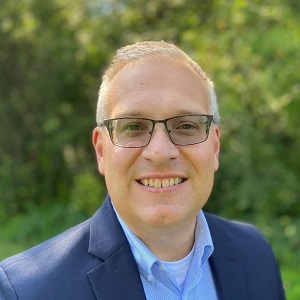Jeremy Rohr, founder of Freedom to Love — which provides resources and tools for young men to direct their desires away from pornography — hopes to help youth discover the true meaning of love without the influence of pornography.
The use of pornography, Rohr said, changed when it could be accessed by computers and mobile devices. The average age a young person will see pornography for the first time is 10 years old, Rohr said.

“There is nothing that they have access to that provides them the level of dopamine that pornography will,” Rohr told “Practicing Catholic” host Patrick Conley on the program that will air at 9 p.m. Nov. 1 on Relevant Radio 1330 AM.
“God created us so that we’re interested in intimacy with the opposite sex,” Rohr said. “We naturally have a curiosity; we naturally are interested in that. But what we don’t realize is that as innocently as it might be that somebody stumbles across it, all of a sudden, the body is flooded with dopamine. And that dopamine makes them forget everything else that is going on around them. Then at that point, now they’re hooked.”
Rohr explained that many young people default to pornography for emotional regulation. When someone is uncomfortable or having a tough day, the body and brain will naturally want to go to something that makes them feel better. For a young person, this might be social media or pornography, whatever gives them the biggest dopamine release.
“They’re searching and they’re looking, and it just floods the system and makes their body dependent on dopamine,” Rohr said. “My goal is actually to work with parents when the kids are 3 to 13 years old, well before they ever experience this. Because what I want them to do is understand the dopamine, understand the places that young people are getting it.”
Rohr suggests the Catholic practice of fasting as a defense against pornography addiction because it creates the ability to say no to something that’s pleasurable. Rohr also said he helps parents understand when to walk with their children to help them learn how to constructively regulate their emotions.
“First, recognize that there’s a difference between shame and guilt,” Rohr said. “Guilt is recognizing that we did something that’s wrong. Shame is the message that our enemy tries to tell us that something is wrong with us, that we’re wrong. Our understanding of the person as Catholics is that when I do something wrong, I confess it, I seek forgiveness, and I look for God’s grace to help me move on.”
Rohr recommends that individuals suffering from pornography addiction reach out to their pastors and priests. For parents, Rohr recommends having more than one conversation about the issue with their kids.
“Even more importantly than that, I think it’s creating an environment that it’s OK to ask questions,” Rohr said.
To hear more from Rohr about pornography use among young people, tune into “Practicing Catholic,” which repeats at 1 p.m. Nov. 2 and 2 p.m. Oct. Nov. 3.
The program also includes a discussion with Father Allan Paul Eilen on how to make confession a meaningful experience. Also, Cynthia Palm shares how she journeyed from Southern Baptist roots to Catholicism during the COVID-19 pandemic.
Produced by Relevant Radio and the Archdiocese of St. Paul and Minneapolis, the program can also be heard after it has aired at archspm.org/faith-and-discipleship/practicing-catholic or choose a streaming platform at Spotify for Podcasters.



